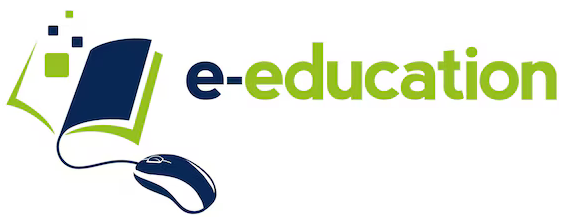As learners increasingly demand recognition that travels with them — across jobs, geographies, platforms, and lifelong learning journeys — the limitations of simple LMS badges become clearer. Meanwhile, digital credentialing platforms are stepping in with features like verifiable metadata, portability, stackable credentials, and external recognition. If you’re building a programme or simply exploring how to make your credentials more meaningful, understanding the key differences, benefits, and how to choose between LMS badges vs fully-fledged digital credentialing platforms is essential.
What Are LMS-Issued Badges and How They Work
LMS badges are digital badges created and awarded within the environment of a learning management system when learners hit milestones — completing modules, finishing assessments, or participating in discussions.
Here are key characteristics of LMS badges:
- They are built-in (or available via plugins) inside the LMS, so minimal extra tools are needed.
- They rely on internal triggers: e.g., module completion, quiz passed, attendance achieved.
- They are primarily designed for internal recognition, gamification, and engagement, rather than external credentialing. The blog states: “on the surface, that sounds like real progress… but in many cases learners struggle to showcase them on professional profiles like LinkedIn.”
- They often live in a closed ecosystem: badges may appear in the LMS, in the student dashboard, but may not link reliably to external verification.
What Are Digital Credentialing Platforms and Why They Matter
Digital credentialing platforms take the concept of badges and certificates further. They enable issuance of verifiable digital credentials that include rich metadata, are shareable across networks, and portable across platforms and organisations.
Some of the features and benefits:
. Metadata-Rich Credentials
The credential includes details such as issuing organisation, skills earned, criteria, evidence, and date issued. This adds trust and depth.
. Verification And Trust
Credentials are designed so that employers or other institutions can click and verify authenticity and details, reducing fraud or uncertainty.
. Portability And Sharing
These credentials can be shared with professional networks (e.g., LinkedIn), included in digital wallets, email signatures, or embedded in portfolios.
. Stackability And Pathways
Many platforms support modular credential pathways: micro-badges stack to certificates, which stack to full credentials. This supports lifelong learning.
. Scalability And Analytics
As credential programmes scale, digital credentialing platforms provide better analytics and infrastructure for large numbers of issuances.
Benefits of Each Approach
Instead of viewing LMS badges and digital credentials as opposing systems, it’s wiser—especially for institutions offering an Online M.Ed. Degree—to see them as complementary tools, each bringing unique strengths to enhance learner engagement, recognition, and professional credibility.
Benefits of LMS-Issued Badges
- Immediate learner engagement: Badges help to gamify learning, provide quick wins, boost motivation, and completion.
- Low-friction implementation: If your institution already has an LMS that supports badges, issuing them can be relatively simple and cost-efficient.
- Internal recognition: For internal training, staff development, and module completions, LMS badges are suitable and fit the context.
- Micro-recognition: Badges can recognise smaller achievements (completion of a module, participation, peer-feedback), which sometimes help learners feel progress.
Benefits of Digital Credentialing Platforms
- External recognition and value: Credentials are verifiable, portable, and carry more weight with employers, other institutions, or across geographies.
- Stackable learning journeys: They support lifelong learning models, micro-credentials, and pathways that stack into larger credentials.
- Brand and trust building: Issuing credentials via a recognised platform can elevate the institution’s credibility, especially important in competitive higher-education markets.
- Data insights and scalability: As programs scale, credentialing platforms offer stronger analytics, integrations, and workflows to manage large-scale issuance.
- Future-proofing: As credentialing ecosystems evolve (blockchain verification, digital wallets, lifelong learning frameworks), credential platforms are better positioned to adapt.
How to Choose: Decision Criteria for Institutions and Learners
Whether you’re an institution designing credentials or a learner deciding which credentials matter, here are key criteria and questions to guide your decision.
1. For Institutions / Providers
When choosing between LMS-issued badges and digital credentialing platforms, first consider your goals — do you need internal recognition within the LMS or external value with employer visibility and portability?
For smaller programmes, LMS badges may suffice, but if you expect hundreds of learners, multiple credential pathways, or the need for large-scale sharing and analytics, a dedicated credentialing platform is better suited.
These platforms also excel in verification and trust, offering secure, verifiable credentials that employers can instantly validate. While LMS badges are more affordable to implement, credentialing platforms provide greater long-term returns through enhanced credibility, industry alignment, and learner engagement.
Finally, evaluate integration and technology readiness — ensure your system connects seamlessly with existing LMS, student management, and HR platforms to avoid manual workflows and save valuable administrative time.
2. For Learners
If you’re simply completing a module for personal growth, an LMS badge may suffice. If you’re building your professional profile and want recognition that employers or educational institutions will understand, opt for credentials issued via recognised platforms.
Can you embed the credential in LinkedIn, a digital profile, or a resume? Can an employer click and verify? If yes => digital credentialing.
If you see stacking micro-credentials into a full certification (or even a programme like a Master’s in Education), then you’ll likely benefit from a more robust credential infrastructure.
Does the issuing institution provide transparency around what the badge or credential means?
Look for metadata: what skills were assessed, how the achievement was measured, and who issued it. Credentials with transparency tend to carry more value.
Bottom Line
For any institution designing a programme — whether it’s a short course or a full Master’s in Education — the decision between LMS badges and a credentialing platform comes down to intent: is your focus internal engagement, or is it externally meaningful credentials that travel with learners? Whichever path you choose, aligning your credential strategy with the learners’ goals and workforce expectations will determine real impact and relevance.


